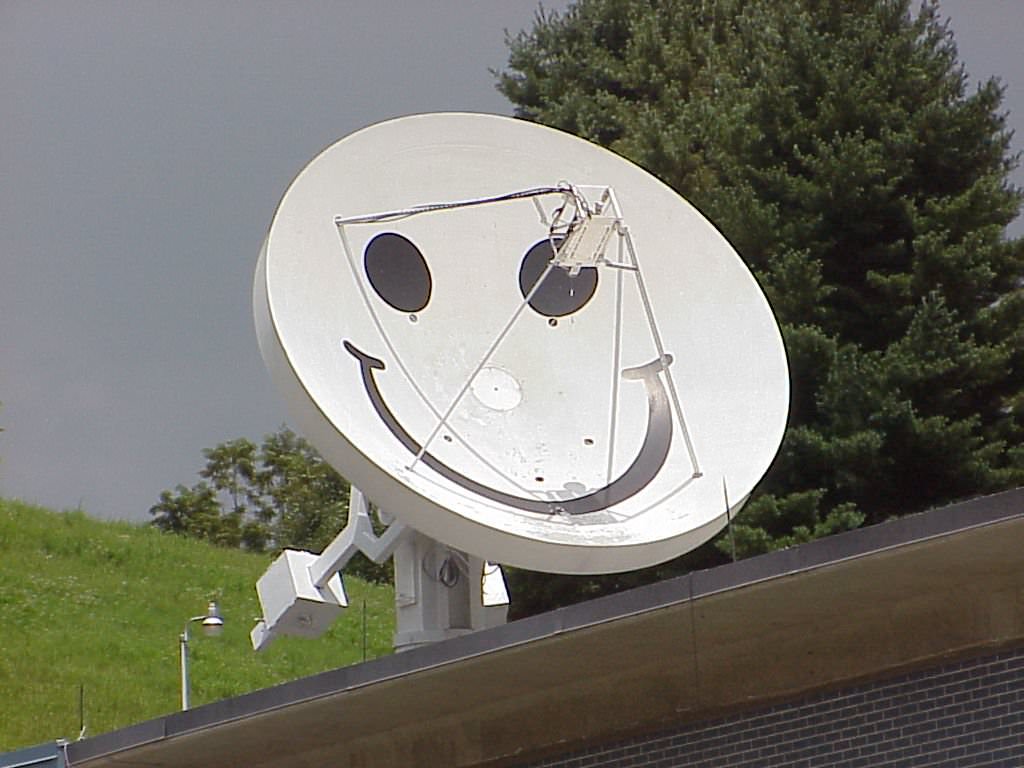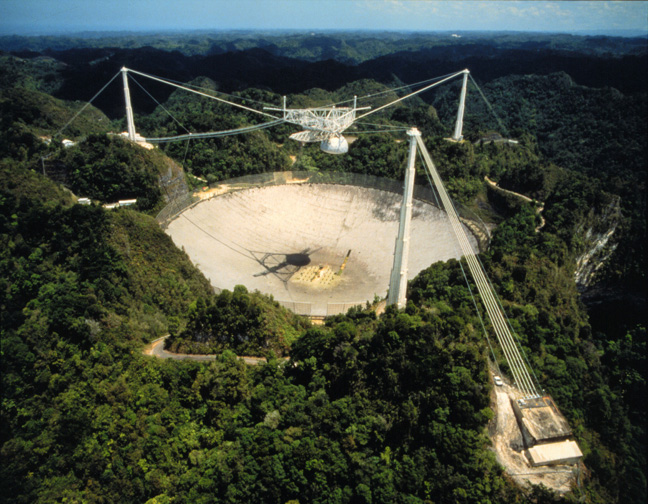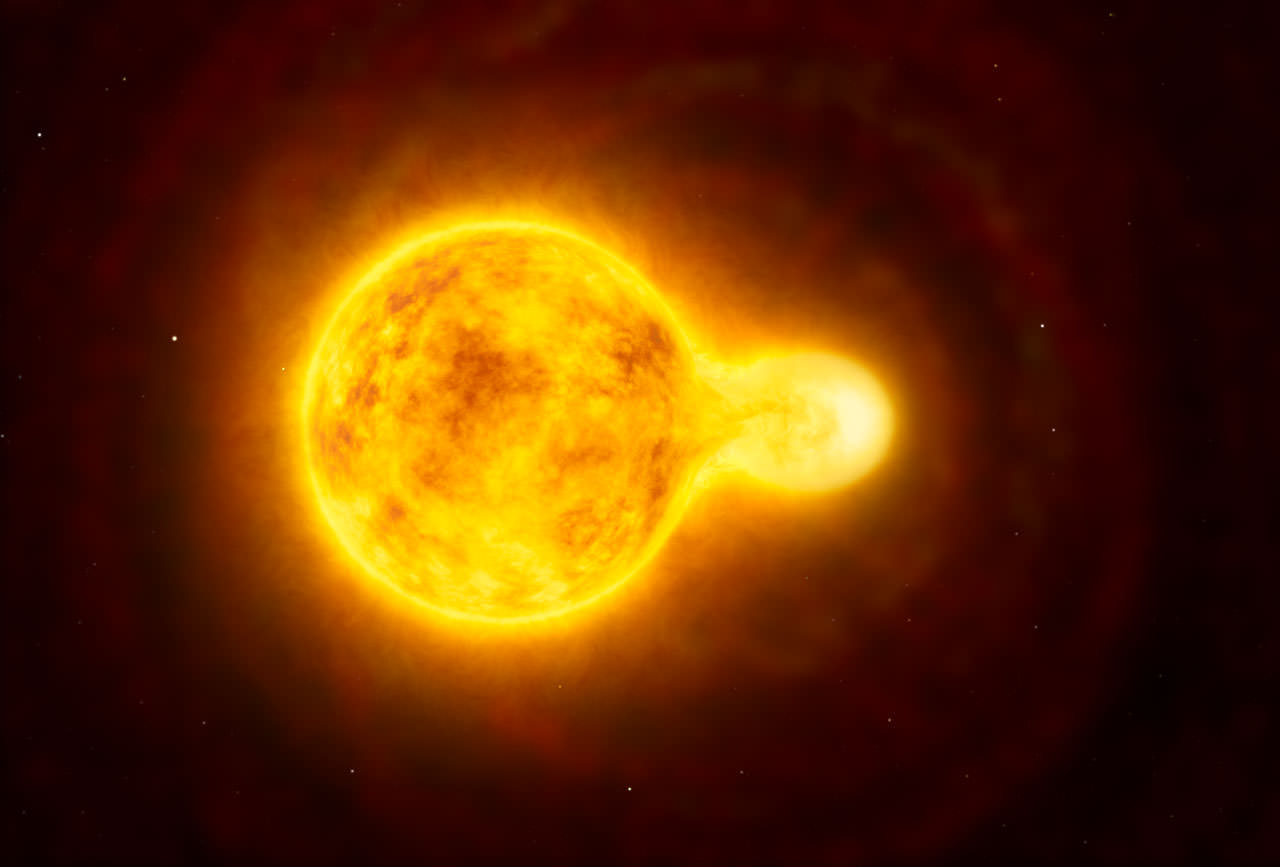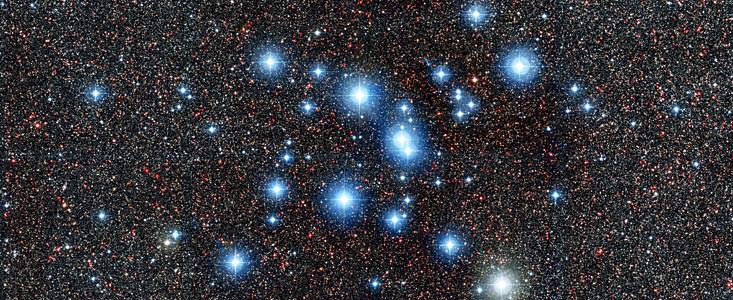A newly released documentary brings you behind the scenes in the hunt for gravitational waves. The 20-minute film, called “LIGO, A Passion for Understanding,” follows the scientists working to create one of the most powerful scientific tools ever made: the Laser Interferometer Gravitational-Wave Observatories (LIGO). You can watch the documentary above.
Continue reading “Watch: New Documentary Follows the Hunt for Gravitational Waves”
The Search for Gravitational Waves: New Documentary About LIGO Premieres Soon
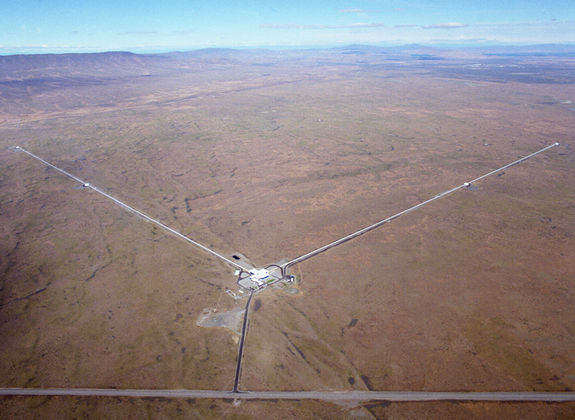
What happens when stars or black holes collide? Scientists have theorized that the energy released would disturb the very fabric of the space-time continuum, much like ripples in a pond. These ripples are called gravitational waves, and while proving the existence of these waves has been difficult, their detection would open a brand new window on our understanding of the Universe.
The Laser Interferometer Gravitational-wave Observatories (LIGO) have been searching for these elusive waves. A new documentary about LIGO will be available soon here on Universe Today, and it documents the science and people behind the unprecedented astronomical tool designed to catch sight of violent cosmic events trillions of miles from our planet.
The new documentary titled, “LIGO, A Passion for Understanding,” follows scientists working with LIGO. It is produced by filmmaker Kai Staats, and this will actually be the first installment to a multi-video series, in fact. Watch the trailer, above.
“A Passion for Understanding” brings to life one of the most important astronomical tools of our time while telling the human story of creativity, passion, and drive to understand the very fabric of the Universe in which we live.
Operated by teams from the California Institute of Technology and Massachusetts Institute of Technology, LIGO’s observatories use 4 km laser beams to hunt for gravitational waves. The LIGO scientific collaboration consists of hundreds of scientists from around the world.
LIGO’s enhanced run ended in 2010, but the Advanced LIGO project featuring newly upgraded instruments is set to begin its run in late 2015. Advanced LIGO will probe deeper into the universe in search of gravitational waves.
Find out more about the documentary on the film’s Facebook page, at the LIGO collaboration website, and on Space.com.
LIGO, A Passion for Understanding – Trailer from Kai Staats on Vimeo.
Webcasts and Forecasts for Tonight’s Total Lunar Eclipse
Are you ready for some eclipse action? We’re now within 24 hours of the Moon reaching its ascending node along the ecliptic at 13:25 Universal Time (UT)/ 9:25 AM EDT on Tuesday morning and meeting the shadow of the Earth just over seven hours earlier.
We’ve written about viewing prospects for tonight’s lunar eclipse. This eclipse is the first total lunar eclipse since December 10th, 2011 and is the first in a series of four — known as an eclipse tetrad — visible from North America in 2014 and 2015. Totality lasts 1 hour and 18 minutes and falls just 29 minutes short of the theoretical maximum, which was last neared on January 21st, 2000 and won’t be topped until July 27th, 2018.
This will be an early morning event for U.S. East Coasters spanning 2:00 to 5:30 AM local (from the start of the partial umbral phases and totality), and a midnight spanning-event for the Pacific coast starting at 11:00 PM Monday night until 2:30 AM Tuesday morning on the 15th.
And as always with celestial events, the chief question on every observer’s mind is: will the skies be clear come show time? Should I stay put, or ponder going mobile?
When it comes to astronomical observing, a majority a mainstream weather resources only tell part of the story, often only listing cloud cover and precipitation percentages. Seeing, transparency, and low versus middle and high cloud decks can often mean the difference between a successful observing session and deciding to pack it in and watch Cosmos reruns online. But the good news is, you don’t need crystal clear skies to observe a total lunar eclipse, just a view of the Moon, which can easily “burn through” a high cirrus cloud deck. We’re going to share a few sites that are essential tools for planning an observing session and what they say about the prospects for seeing tonight’s eclipse.
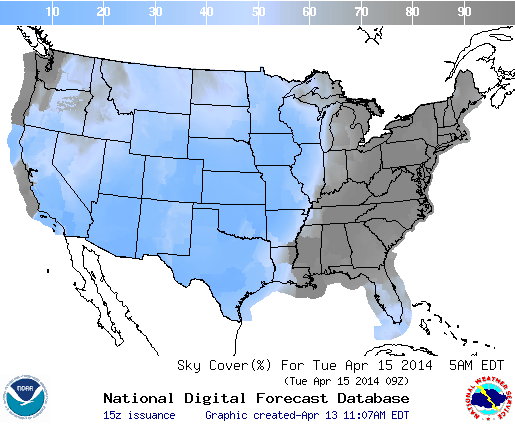
Now the bad news: things aren’t looking good for eastern North America. In fact, the dividing line between “cloudy” and “clear” runs right down through central Ontario and follows the Mississippi River at mid-eclipse, which occurs at 7:47 UT/3:47 AM EDT. There’s a high pressure front sweeping eastward, bringing rain and cloudy skies with it. The Florida peninsula and parts of New England and the Canadian Maritimes may have shots at viewing the eclipse through partly cloudy skies.
The National Oceanic and Atmospheric Administration maintains a great interactive site with graphical interactive forecasts, to include satellite maps. Another long-standing source of good info is the Weather Underground. For tailor-made astronomy forecasts, we’re checking Clear Sky Chart (formerly Clear Sky Clock) and SkippySky daily for upcoming prospects. A great feature in SkippySky is that it not only gives you cloud cover maps, but layers them with high versus middle and low clouds… again, a thin high cloud deck during the lunar eclipse could still mean game on!
Clouded out? There’s a half dozen webcasts planned for tonight’s lunar eclipse as well.
Dependable Slooh will have a live broadcast with commentary on the eclipse starting at 2AM EDT/6:00 UT:
Also, our good friends at the Virtual Telescope Project will be covering the lunar eclipse as part of their ongoing Global Astronomy Month campaign and will utilize several North American observers to cover the event:
NASA is also planning a broadcast out of the Marshall Space Flight Center of the eclipse along with a discussion on Reddit with NASA planetary scientist Renee Weber also starting at 2:00 AM EDT:
The Coca-Cola Space Science Center and Columbus State University also plans host a webcast of the lunar eclipse starting at 3:00 UT/11:00 PM EDT.
Also, the PBS Star Gazers project is planning on hosting a broadcast of the eclipse starting at 1:30 AM EDT/5:30 UT:
And finally, we hope to launch our very own initiation into the world of eclipse webcasting with an hour-long broadcast of the crucial phase transition from partial to total eclipse starting at 2:30 AM EDT/6:30 UT, weather willing:
Live streaming video by Ustream
And hey, word is that doomsday purveyor John Hagee is planning a broadcast of a more “End of the World” bent tonight as well. We didn’t know he was an astronomy fan…
Prospects call for a brighter than normal eclipse, as atmospheric sciences professor at the University of Colorado Richard Keen notes that the Earth’s stratosphere is currently relatively clear of dust and volcanic ash. Still, we’ve been surprised before. The darkness and color of the eclipsed Moon is expressed on what’s known as the Danjon scale. As during eclipses previous, we’ll be data-mining Twitter for estimates and averages to see how they stack up… tweet those observations to #DanjonNumber.
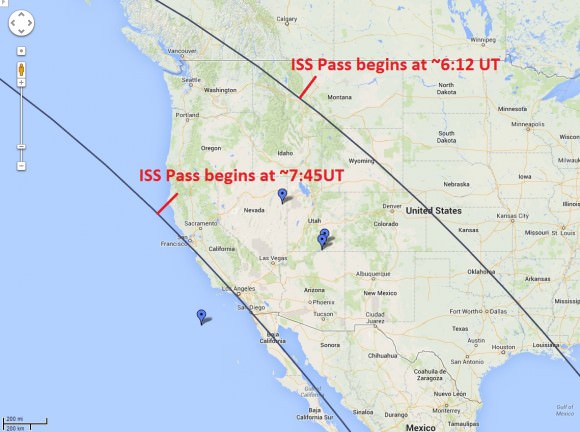
We also ran the possibilities for catching a shadow transit of the International Space Station in front of the eclipsed Moon for North American observers. To our knowledge, this has never been done before. Live near one of the two paths depicted above? You may be the first to accomplish this unusual feat. Check in with CALSky for specifics.
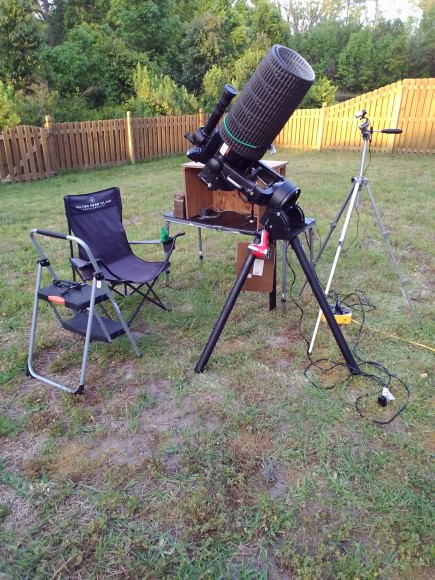
Finally, ever wonder when the next eclipse will occur during the Sunday night Virtual Star Party? If you’re like us, you consider and ponder such astronomical occurrences… and it turns out, the very last lunar eclipse in the current tetrad next year on September 28th, 2015 does just that. And stick around until July 13th, 2037 and we’ll have the first ever total solar eclipse occurring during the show… we just need someone in Australia to stream it!
Tonight’s eclipse is number 56 of saros 122. Reader Rob Sparks notes that the last eclipse (55) in this series occurred on April 4th 1996 and also hosted an extra-special celestial treat, as Comet Hyakutake was just beginning to put on its memorable performance.
In short, don’t fear the “Blood Moon,” but do get out and catch tonight’s fine lunar eclipse… we’ll be doing a post-eclipse photo roundup tomorrow, so be sure to send those pics in to Universe Today!
Mars Opposition Season 2014: Images From Around the World

Did you see it? Last night, the Red Planet rose in the east as it passed opposition for 2014, and astrophotographers the world over were ready to greet it. And although Mars gets slightly closer to us over the coming week, opposition marks the point at which Mars is 180 degrees “opposite” to the setting Sun in Right Ascension as viewed from our Earthly vantage point and denotes the center of the Mars observing season. Opposition only comes around once about every 26 months, so it’s definitely worth your while to check out Mars through a telescope now if you can. We’ve written about prospects for observing Mars this season, and the folks at Slooh and the Virtual Telescope Project also featured live views of the Red Planet last night. We also thought we’d include a reader roundup of pics from worldwide:
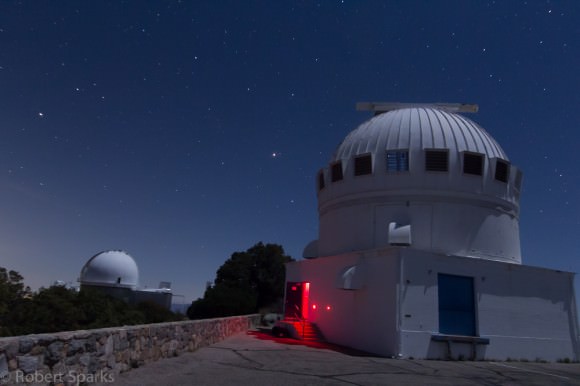
Even near opposition, Mars presents a challenge to observers. In 2014, Mars only reaches 15 arc seconds maximum in apparent size, a far cry from its 25″ appearance during the historic 2003 opposition. Now for the good news: we’re in a cycle of improving oppositions… the next one on May 22nd, 2016 will be better still, and the 2018 opposition will be nearly as favorable as the 2003 appearance!
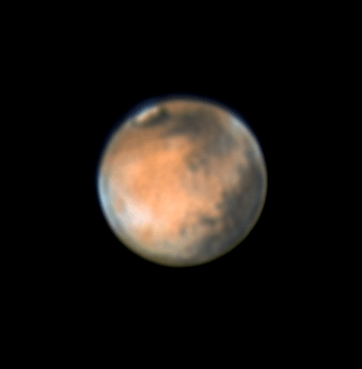
And you can see just how technology in the amateur astronomy community has improved with each successive appearance of Mars over the years. Early observers were restricted to sketching features glimpsed during fleeting moments of steady seeing. Even during the film era of photography, absurdly long focal lengths were required to yield even a tiny speck of a dot. And even then, the “graininess” of the film tended to smear and yield a blurry image with few details to be seen.
The advent of digital photography opened new vistas on planetary imaging. Now backyard astrophotographers are routinely taking images using stacking techniques and processing to “grab” and align those moments of good seeing. These images are often now better that what you’d see in a text book taken from professional observatories only a few decades ago!
And you can now easily modify a webcam to take decent planetary images that can then be stacked and processed with software freely available on the web.
…And check out this video animation also by Christian Fröschlin that shows the rotation (!) of Mars:
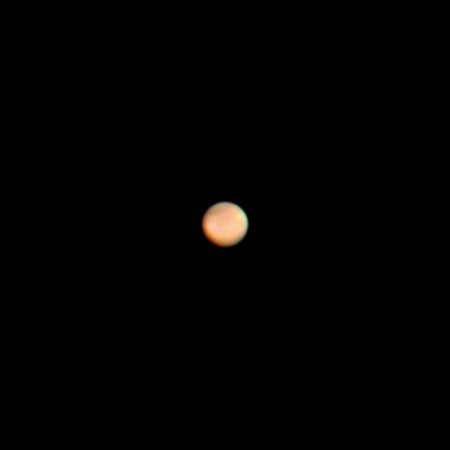
Shahrin Ahmad made an excellent video from Malaysia that demonstrates just what raw captured images of Mars look like before processing:
Note that the large dark triangular region is Syrtis Major.
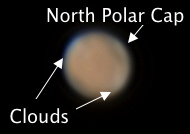
The northern polar cap is currently tipped towards us, as it’s northern hemisphere summertime on Mars. Many images reflect this prominent feature, as well as the orographic clouds skirting the Hellas basin that have been the hallmark of the Mars opposition of 2014. These are also apparent visually at the eyepiece. It’s worth staying up a bit towards local midnight to observe and image Mars, as it transits at its maximum elevation — and is above the murk of the sky low to the horizon — right around this time.
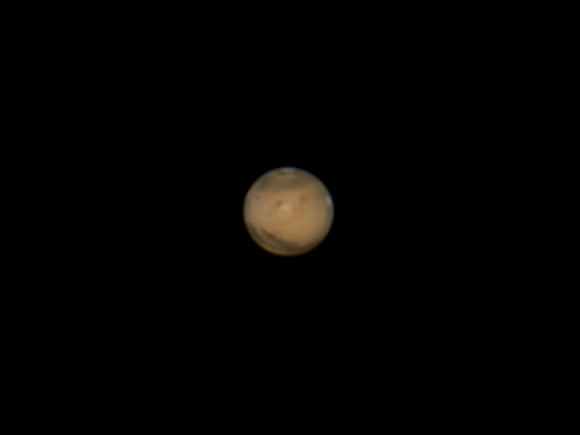
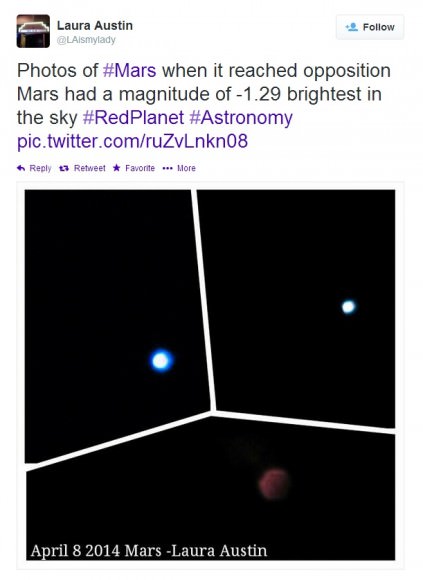
And Mars observing season doesn’t end this week. Mars makes its closest passage to the Earth for 2014 next Monday on April 14th at 0.618 Astronomical Units (A.U.s) distant. Mars will occupy the evening sky for the remainder of 2014 before finally reaching solar conjunction on June 14th, 2015. Mars will still be greater than a respectable 10″ in apparent size until June 24th and will continue to offer observers a fine view at the eyepiece.
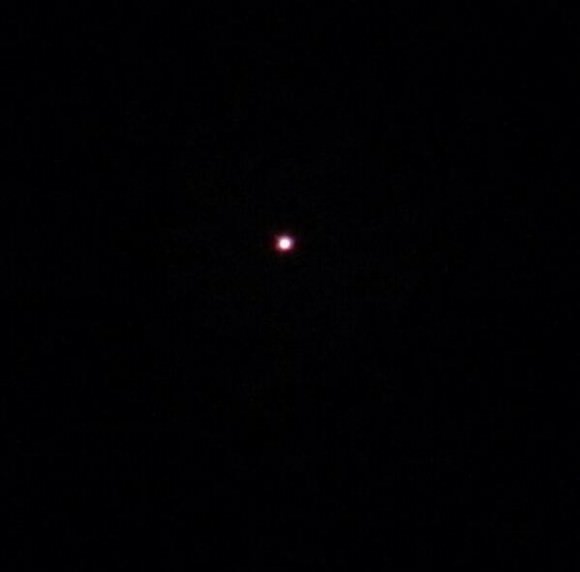
And don’t forget, that waxing gibbous Moon is now homing in on Mars and will only sit a few degrees away from the Red Planet and Spica on the night of the April 14th/15th, 2014 during a fine total lunar eclipse. And no, a “red” planet + a “blood red” eclipsed Moon does not equal doomsday… but it’ll make a great photo op!
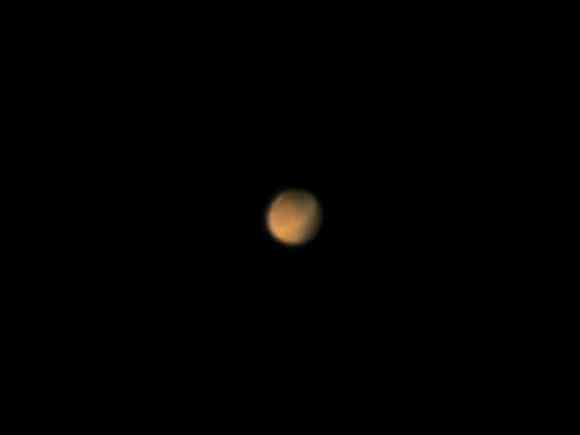
… and finally, Mars and the bright blue-white star Spica offered us a fine morning view as the storm front passed over Astroguyz HQ here in Florida this AM:
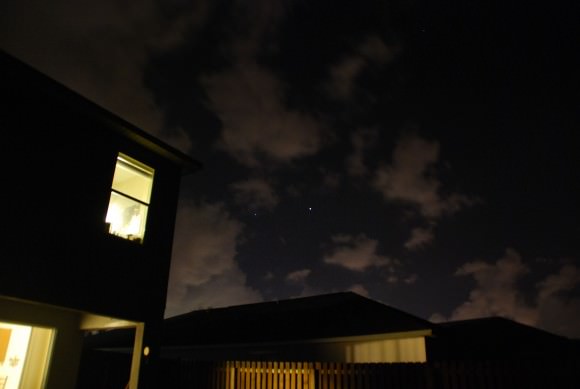
Want something more? Have you ever seen Mars… in the daytime? Currently shining at magnitude -1.5, its just possible if you known exactly where to look for it low to the east about 10 minutes or so before local sunset. In fact, near opposition is the only time you can carry this unusual feat of visual athletics out. The best chance in 2014 is on the evening of April 13th and 14th, when the waxing gibbous Moon lies nearby:
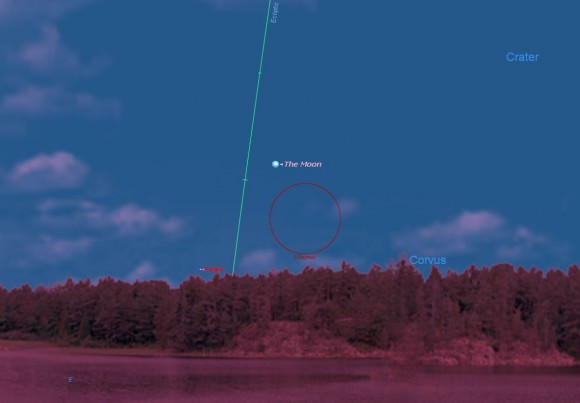
Good luck, and thanks to everyone who imaged Mars this season!
Adventures in (Radio) Amateur Astronomy
Is there truly anything new under the Sun? Well, when it comes to amateur astronomy, many observers are branching out beyond the optical. And while it’s true that you can’t carry out infrared or X-ray astronomy from your backyard — or at least, not until amateurs begin launching their own space telescopes — you can join in the exciting world of amateur radio astronomy.
We’ll admit right out the gate that we’re a relative neophyte when it comes to the realm of radio astronomy. We have done radio observations of meteor showers in tandem with optical observations, and have delved into the trove of information on constructing radio telescopes over the years. Consider this post a primer of sorts, an intro into the world of radio amateur astronomy. If there’s enough interest, we’ll follow up with a multi-part saga, constructing and utilizing our own ad-hoc “redneck array” in our very own backyard with which to alarm the neighbors and probe the radio cosmos.

…And much like our exploits in planetary webcam imaging, we’ve discovered that you may have gear kicking around in the form of an old TV dish – remember satellite TV? – in your very own backyard. A simple radio telescope setup need not consist of anything more sophisticated than a dish (receiver), a signal strength detector (often standard for pointing a dish at a satellite during traditional installation) and a recorder. As you get into radio astronomy, you’ll want to include such essentials as mixers, oscillators, and amplifiers to boost your signal.
Frequency is the name of the game in amateur radio astronomy, and most scopes are geared towards the 18 megahertz to 10,000 megahertz range. A program known as Radio-SkyPipe makes a good graphic interface to turn your laptop into a recorder.
Radio astronomy was born in 1931, when Karl Jansky began researching the source of a faint background radio hiss with his dipole array while working for Bell Telephone. Jansky noticed the signal strength corresponded to the passage of the sidereal day, and correctly deduced that it was coming from the core of our Milky Way Galaxy located in the constellation Sagittarius. Just over a decade later, Australian radio astronomer Ruby Payne-Scott pioneered solar radio astronomy at the end of World War II, making the first ever observations of Type I and III solar bursts as well as conducting the first radio interferometry observations.
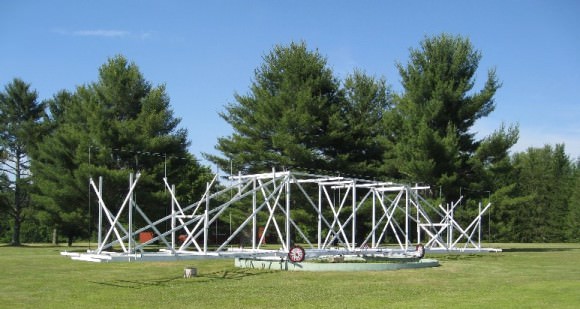
What possible targets exist for the radio amateur astronomer? Well, just like those astronomers of yore, you’ll be able to detect the Sun, the Milky Way Galaxy, Geostationary and geosynchronous communication satellites and more. The simple dish system described above can also detect temperature changes on the surface of the Moon as it passes through its phases. Jupiter is also a fairly bright radio target for amateurs as well.
Radio meteors are also within the reach of your FM dial. If you’ve ever had your car radio on during a thunderstorm, you’ve probably heard the crackle across the radio spectrum caused by a nearby stroke of lightning. A directional antenna is preferred, but even a decent portable FM radio will pick up meteors on vacant bands outdoors. These are often heard as ‘pings’ or temporary reflections of distant radio stations off of the trail of ionized gas left in the wake of a meteor. Like with visual observing, radio meteors peak in activity towards local sunrise as the observer is being rotated forward into the Earth’s orbit.
Amateur SETI is also taking off, and no, we’re not talking about your crazy uncle who sits out at the end of runways watching for UFOs. BAMBI is a serious amateur-led project. Robert Gray chronicled his hunt for the elusive Wow! signal in his book by the same name, and continues an ad hoc SETI campaign. With increasingly more complex rigs and lots of time on their hands, it’s not out of the question that an amateur SETI detection could be achieved.
Another exciting possibility in radio astronomy is tracking satellites. HAM radio operators are able to listen in on the ISS on FM frequencies (click here for a list of uplink and downlink frequencies), and have even communicated with the ISS on occasion. AMSAT-UK maintains a great site that chronicles the world of amateur radio satellite tracking.
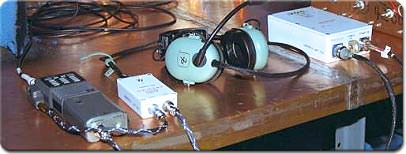
Old TV dishes are being procured for professional use as well. One team in South Africa did just that back in 2011, scouring the continent for old defunct telecommunications dished to turn them into a low cost but effective radio array.
Several student projects exist out there as well. One fine example is NASA’s Radio JOVE project, which seeks student amateur radio observations of Jupiter and the Sun. A complete Radio Jove Kit, to include receiver and Radio-SkyPipe and Radio-Jupiter Pro software can be had for just under 300$ USD. You’d have a tough time putting together a high quality radio telescope for less than that! And that’s just in time for prime Jupiter observing as the giant planet approaches quadrature on April 1st (no fooling, we swear) and is favorably placed for evening observing, both radio and optical.
Fearing what the local homeowner’s association will say when you deploy your very own version of Jodrell Bank in your backyard? There are several online radio astronomy projects to engage in as well. SETI@Home is the original crowd sourced search for ET online. The Zooniverse now hosts Radio Galaxy Zoo, hunting for erupting black holes in data provided by the Karl Jansky Very Large Array and the Australia Telescope Compact Array. PULSE@Parkes is another exciting student opportunity that lets users control an actual professional telescope. Or you can just listen for meteor pings online via NASA’s forward scatter meteor radar based out of the Marshall Space Flight Center in Huntsville, Alabama. Adrian West also hosts live radio meteor tracking on his outstanding Meteorwatch website during times of peak activity.
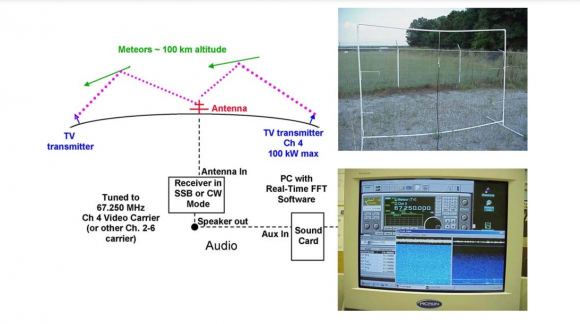
Interested? Other possibilities exist for the advanced user, including monitoring radio aurorae, interferometry, catching the hiss of the cosmic microwave background and even receiving signals from more distant spacecraft, such as China’s Yutu rover on the Moon.
Think of this post as a primer to the exciting world of amateur radio astronomy. If there’s enough interest, we’ll do a follow up “how-to” article as we assemble and operate a functional amateur radio telescope. Or perhaps you’re an accomplished amateur radio astronomer, with some tips and tricks to share. There’s more to the universe than meets the eye!
-Also be sure to check out SARA, the Society of Amateur Radio Astronomers.
Arecibo Observatory Back in Action Following Earthquake Damage
Damage to the iconic Arecibo Observatory from an earthquake earlier this year has been repaired and the telescope is now back to full service. On January 13, 2014, the William E. Gordon radio telescope sustained damage following a 6.4 magnitude earthquake that was centered 37 miles northwest of Arecibo. A large cable that supports the telescope’s receiver platform had “serious damage,” according to Bob Kerr, the Director of the Arecibo Observatory.
“In an abundance of caution, telescope motion had been very limited since the earthquake,” said Kerr in a press release issued today. “Nevertheless, the telescope continued its science mission, including participation in a 10-day global ionospheric study in late January and continuing a productive search for pulsars in the sky above Arecibo.”
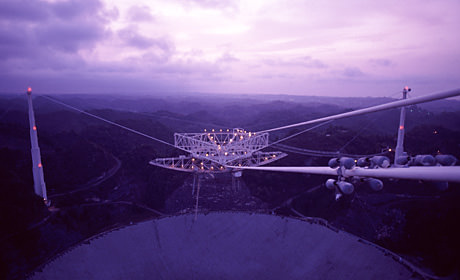
The cable that was damaged was one of 18 cables that supports the 900-ton focal platform of the telescope. This particular cable was actually a known potential problem, Kerr told Universe Today in a previous interview. He said that during original construction of the telescope in 1962, one of the original platform suspension cables that was delivered to the observatory was too short, and another short cable section was “spliced” to provide sufficient reach to the platform.
“That cable segment and splice near the top of one of the telescope towers was consequently more rigid than the balance of the suspension system,” Kerr said. “When the earthquake shook the site, just after midnight on January 13, it is that short cable and splice that suffered damage.”
“You might say that our structural Achilles heel was exposed,” Kerr added.
Inspectors from New York’s Ammann & Whitney Bridge Construction, who have been inspecting the Arecibo observatory site since 1972, were brought in to access the situation and Kerr said a relatively low-cost (less than $100,000) repair option was designed and carried out, bringing the telescope back into full service as of March 13, exactly two months from when the earthquake occurred.
The Arecibo Observatory is operated by SRI International, teaming with Universidad Metropolitana and the Universities Space Research Association, in a cooperative agreement with the National Science Foundation.
Astronomers Identify the Largest Yellow “Hypergiant” Star Known
A stellar monster lurks in heart of the Centaur.
A recent analysis of a star in the south hemisphere constellation of Centaurus has highlighted the role that amateurs play in assisting with professional discoveries in astronomy.
The find used of the European Southern Observatory’s Very Large Telescope based in the Atacama Desert in northern Chile — as well as data from observatories around the world — to reveal the nature of a massive yellow “hypergiant” star as one of the largest stars known.
The stats for the star are impressive indeed: dubbed HR 5171 A, the binary system weighs in at a combined 39 solar masses, has a radius of over 1,300 times that of our Sun, and is a million times as luminous. Located 3,600 parsecs or over 11,700 light years distant, the star is 50% larger than the famous red giant Betelgeuse. Plop HR 5171 A down into the center of our own solar system, and it would extend out over 6 astronomical units (A.U.s) past the orbit of Jupiter.
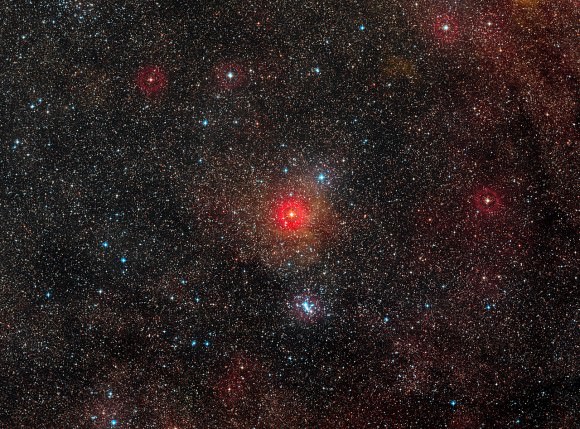
Researchers used observations going back over 60 years – some of which were collected by dedicated amateur astronomers – to pin down the nature of this curious star. A variable star just below naked eye visibility spanning a magnitude range from +6.1 to +7.3, HR 5171 A also has a relatively small companion star orbiting across our line of sight once every 1300 days. Such a system is known as an eclipsing binary. Famous examples of similar systems are the star Algol (Alpha Persei), Epsilon Aurigae and Beta Lyrae. The companion star for HR 5171 is also a large star in its own right at around six solar masses and 400 solar radii in size. The distance from center-to-center for the system is about 10 A.U.s – the distance from Sol to Saturn – and the surface-to-surface distance for the A and B components of the system are “only” about 2.8 A.U.s apart. This all means that these two massive stars are in physical contact, with the expanded outer atmosphere of the bloated primary contacting the secondary, giving the pair a distorted peanut shape.
“The companion we have found is very significant as it can have an influence on the fate of HR 5171 A, for example stripping off its outer layers and modifying its evolution,” said astronomer Olivier Chesneau of the Observatoire de la Côte d’Azur in Nice France in the recent press release.
Knowing the orbital period of a secondary star offers a method to measure the mass of the primary using good old Newtonian mechanics. Coupled with astrometry used to measure its tiny parallax, this allows astronomers to pin down HR 5171 A’s stupendous size and distance.
Along with luminous blue variables, yellow hypergiants are some of the brightest stars known, with an absolute magnitude of around -9. That’s just 16x times fainter than the apparent visual magnitude of a Full Moon but over 100 times brighter than Venus – if you placed a star like HR 5171 A 32 light years from the Earth, it would easily cast a shadow.
Astronomers used a technique known as interferormetry to study HR 5171 A, which involves linking up several telescopes to create the resolving power of one huge telescope. Researchers also culled through over a decade’s worth data to analyze the star. Though much of what had been collected by the American Association of Variable Star Observers (the AAVSO) had been considered to be too noisy for the purposes of this study, a dataset built from 2000 to 2013 by amateur astronomer Sebastian Otero was of excellent quality and provided a good verification for the VLT data.
The discovery is also crucial as researchers have come to realize that we’re catching HR 5171 A at an exceptional phase in its life. The star has been getting larger and cooling as it grows, and this change can be seen just over the past 40 year span of observations, a rarity in stellar astronomy.
“It’s not a surprise that yellow hypergiants are very instable and lose a lot of mass,” Chesneau told Universe Today. “But the discovery of a companion around such a bright star was a big surprise since any ‘normal’ star should at least be 10,000 times fainter than the hypergiant. Moreover, the hypergiant was much bigger than expected. What we see is not the companion itself, but the regions gravitationally controlled and filled by the wind from the hypergiant. This is a perfect example of the so-called Roche model. This is the first time that such a useful and important model has really been imaged. This hypergiant exemplifies a famous concept!”
Indeed, you can see just such photometric variations as the secondary orbits its host in the VLTI data collected by the AMBER interferometer, backed up by observations from GEMINI’s NICI chronograph:
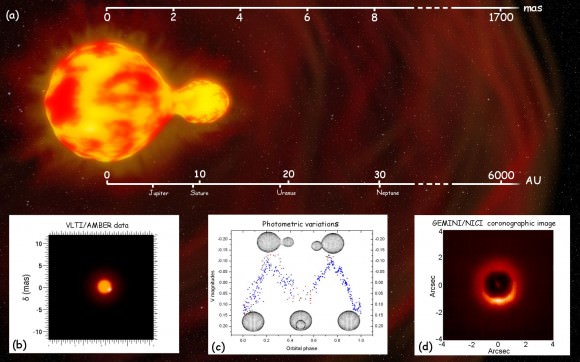
The NIGHTFALL program was also used for modeling the eclipsing binary components.
These latest measurements place HR 5171 A firmly in the “Top 10” for largest stars in terms of size known, as well as the largest yellow hypergiant star known This is due mainly to tidal interactions with its companion. Only eight yellow hypergiants have been identified in our Milky Way galaxy. HR 5171 A is also in a crucial transition phase from a red hypergiant to becoming a luminous blue variable or perhaps even a Wolf-Rayet type star, and will eventually end its life as a supernova.
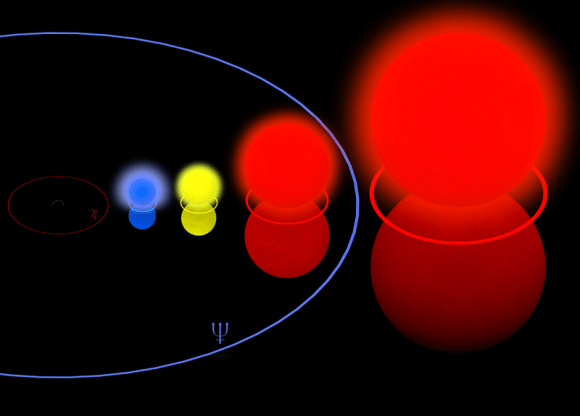
HR 5171 A is also known as HD 119796, HIP 67261, and V766 Centauri. Located at Right Ascension 13 Hours 47’ 11” and declination -62 degrees 35’ 23,” HR 5171 culminates just two degrees above the southern horizon at local midnight as seen from Miami in late March.
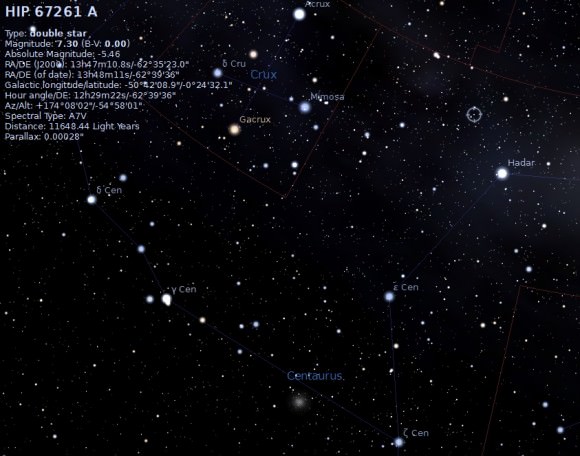
HR 5171 A is a fine binocular object for southern hemisphere observers.
But the good news is, there’s another yellow hypergiant visible for northern hemisphere observers named Rho Cassiopeiae:
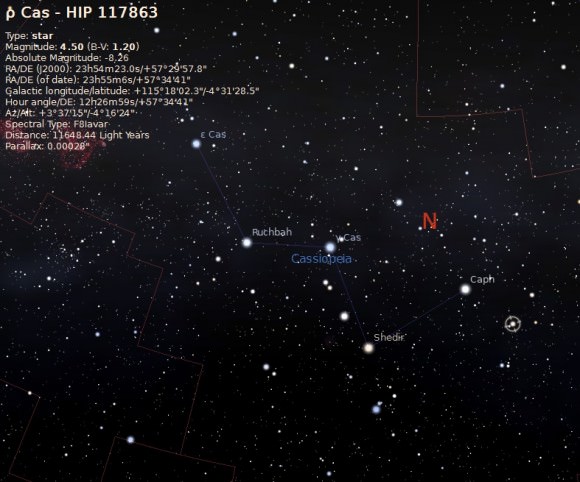
Rho Cass is one of the few naked eye examples of a yellow hypergiant star, and varies from magnitude +4.1 to +6.2 over an irregular period.
It’s amusing read the Burnham’s Celestial Handbook entry on Rho Cass. He notes the lack of parallax and the spectral measurements of the day — the early 1960s — as eluding to a massive star with a “true distance… close to 3,000 light years!” Today we know that Rho Cassiopeiae actually lies farther still, at over 8,000 light years distant. Robert Burnham would’ve been impressed even more by the amazing nature of HR 5171 as revealed today by ESO astronomers!
– The AAVSO is always seeking observations from amateur astronomers of variable stars.
A Natural Planetary Defense Against Solar Storms
Planetary shields up: solar storms inbound…
Researchers at NASA’s Goddard Spaceflight Center and the Massachusetts Institute of Technology have identified a fascinating natural process by which the magnetosphere of our fair planet can — to use a sports analogy — “shot block,” or at least partially buffer an incoming solar event.
The study, released today in Science Express and titled “Feedback of the Magnetosphere” describes new process discovered in which our planet protects the near-Earth environment from the fluctuating effects of inbound space weather.
Our planet’s magnetic field, or magnetosphere, spans our world from the Earth’s core out into space. This sheath typically acts as a shield. We can be thankful that we inhabit a world with a robust magnetic field, unlike the other rocky planets in the inner solar system.
But when a magnetic reconnection event occurs, our magnetosphere merges with the magnetic field of the Sun, letting in powerful electric currents that wreak havoc.
Now, researchers from NASA and MIT have used ground and space-based assets to identify a process that buffers the magnetosphere, often keeping incoming solar energy at bay.
The results came from NASA’s Time History Events and Macroscale Interactions during Substorms (THEMIS) constellation of spacecraft and was backed up by data gathered over the past decade for MIT’s Haystack Observatory.
Observations confirm the existence of low-energy plasma plumes that travel along magnetic field lines, rising tens of thousands of kilometres above the Earth’s surface to meet incoming solar energy at a “merging point.”
“The Earth’s magnetic field protects life on the surface from the full impact of these solar outbursts,” said associate director of MIT’s Haystack Observatory John Foster in the recent press release. “Reconnection strips away some of our magnetic shield and lets energy leak in, giving us large, violent storms. These plasmas get pulled into space and slow down the reconnection process, so the impact of the Sun on the Earth is less violent.”
The study also utilized an interesting technique known as GPS Total Electron Content or GPS-TEC. This ground-based technique analyzes satellite transmitted GPS transmissions to thousands of ground based receivers, looking for tell-tale distortions that that signify clumps of moving plasma particles. This paints a two dimensional picture of atmospheric plasma activity, which can be extended into three dimensions using space based information gathered by THEMIS.
And scientists got their chance to put this network to the test during the moderate solar outburst of January 2013. Researchers realized that three of the THEMIS spacecraft were positioned at points in the magnetosphere that plasma plumes had been tracked along during ground-based observations. The spacecraft all observed the same cold dense plumes of rising plasma interacting with the incoming solar stream, matching predictions and verifying the technique.
Launched in 2007, THEMIS consists of five spacecraft used to study substorms in the Earth’s magnetosphere. The Haystack Observatory is an astronomical radio observatory founded in 1960 located just 45 kilometres northwest of Boston, Massachusetts.
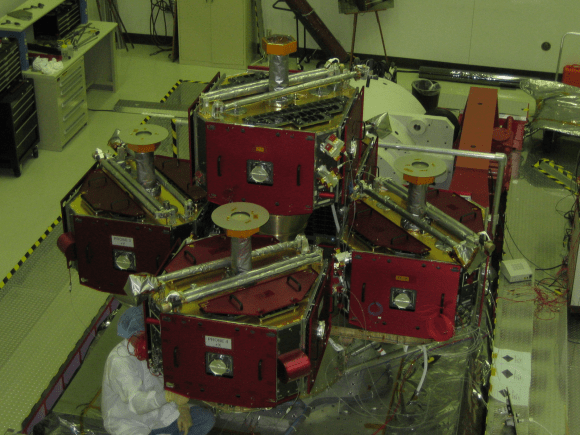
How will this study influence future predictions of the impact that solar storms have on the Earth space weather environment?
“This study opens new doors for future predictions,” NASA Goddard researcher Brian Walsh told Universe Today. “The work validates that the signatures of the plume far away from the Earth measured by spacecraft match signatures in the Earth’s upper atmosphere made from the surface of the Earth. Although we might not always have spacecraft in exactly the correct position to measure one of these plumes, we have almost continuous coverage from ground-based monitors probing the upper atmosphere. Future studies can now use these signatures as a proxy for when the plume has reached the edge of our magnetic shield (known as the magnetopause) which will help us predict how large a geomagnetic storm will occur from a given explosion from the Sun when it reaches the Earth.”
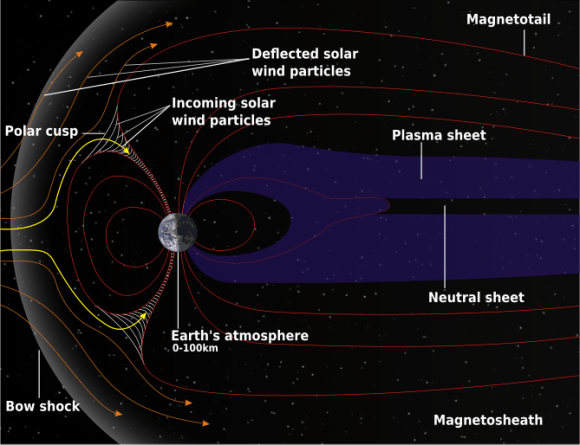
Understanding how these plasma plumes essentially hinder or throttle incoming energy during magnetic reconnection events, as well as the triggering or source mechanism for these plumes is vital.
“The source of these plumes is an extension of the upper atmosphere, a region that space physicists call the plasmasphere,” Mr. Walsh told Universe Today. “The particles that make the plume are actually with us almost all of the time, but they normally reside relatively close to the Earth. During a solar storm, a large electric field forms and causes the upper layers of the plasmasphere to be stripped away and are sent streaming sunward towards the boundary of our magnetic field. This stream of particles is the ‘plume’ or ‘tail’”
Recognizing the impacts that these plumes have on space weather will lead to better predictions and forecasts for on- and off- the planet as well, including potential impacts on astronauts aboard the International Space Station. Flights over the poles are also periodically rerouted towards lower latitudes during geomagnetic storms.
“This study defines new tools for the toolbox we use to predict how large or how dangerous a given solar eruption will be for astronauts and satellites,” Walsh said. “This work offers valuable new insights and we hope these tools will improve prediction capabilities in the near future.”
Spaceweather is currently a hot topic, as we’ve recently seen an uptick in auroral activity last month.
And speaking of which, there’s a common misconception out there that we see reported every time auroral activity makes the news… remember that aurorae aren’t actually caused by solar wind particles colliding with our atmosphere, but the acceleration of particles trapped in our magnetic field fueled by the solar wind.
And speaking of solar activity, there’s also an ongoing controversy in the world of solar heliophysics as to the lackluster solar maximum for this cycle, and what it means for concurrent cycles #25 and #26.
It’s exciting times indeed in the science of space weather forecasting…
and hey, we got to drop in sports analogy, a rarity in science writing!
SOFIA Snapshots: Jupiter And Starbirth Among Achievements For Observatory Facing Sidelines

Just weeks after becoming fully operational, the Stratospheric Observatory for Infrared Astronomy (SOFIA) is facing storage in 2015. The airborne observatory costs NASA about $85 million annually, making it one of the more expensive missions the agency has. Yesterday, administrator Charlie Bolden told reporters that it was a matter of making choices, and that the money from SOFIA could go to missions such as Cassini.
This isn’t the first time that SOFIA faced budget challenges. Back in 2006, for example, NASA placed the program on hold due to several program and budget challenges that are outlined in this Universe Today article, but after a review the observatory program moved forward.
Much of the expense comes from flying the modified 747 airplane to carry the telescope, which was built by the Germans and has a mirror of about 2.5 meters (100 inches). NASA said it is possible that DLR could take on more of the cost, and said it is in discussions with the German space agency to figure out the telescope’s future.
The telescope saw its first light in 2010. Here are some of the special things it’s spotted in three years and about 400 hours of flying.
Mighty Jupiter’s heat
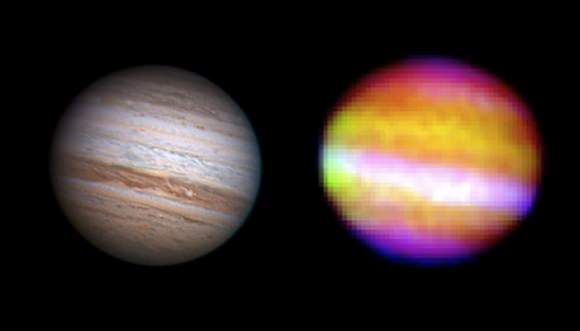
This is one of the first observations that SOFIA performed. “The crowning accomplishment of the night came when scientists on board SOFIA recorded images of Jupiter,” said USRA SOFIA senior science advisor Eric Becklin in 2010. “The composite image from SOFIA shows heat, trapped since the formation of the planet, pouring out of Jupiter’s interior through holes in its clouds.”
M82 supernova
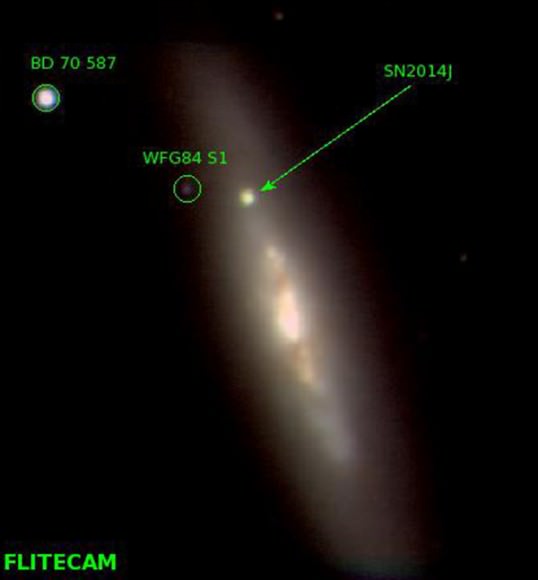
Although a lot of observatories are checking out the recent star explosion, SOFIA’s observations found heavy metals being thrown out in the supernova. “When a Type Ia supernova explodes, the densest, hottest region within the core produces nickel 56,” said Howie Marion from the University of Texas at Austin, a co-investigator aboard the flight, a few days ago. “The radioactive decay of nickel-56 through cobalt-56 to iron-56 produces the light we are observing tonight. At this life phase of the supernova, about one month after we first saw the explosion, the H- and K-band spectra are dominated by lines of ionized cobalt. We plan to study the spectral features produced by these lines over a period of time and see how they change relative to each other. That will help us define the mass of the radioactive core of the supernova.”
A star nursery
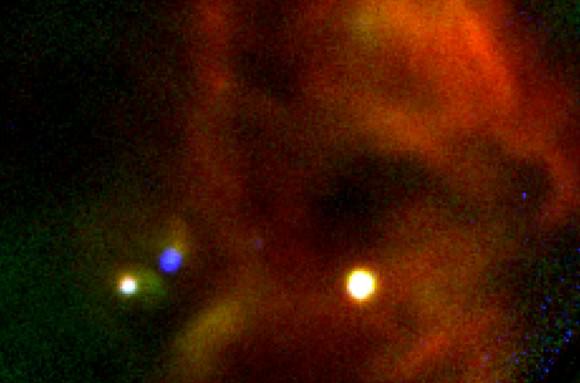
In 2011, SOFIA turned its eyes to star-forming region W40 and was able to peer through the dust to see some interesting things. The telescope was able to look at the bright nebula in the center, which includes six huge stars that are six to 20 times more massive than the sun.
Stars forming in Orion
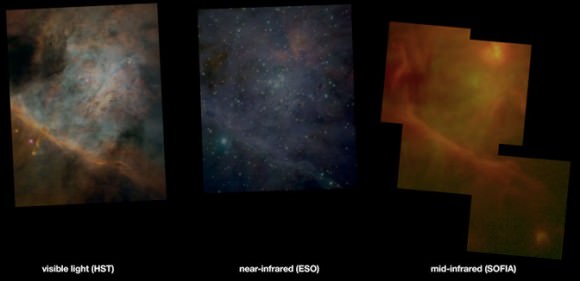
These three pictures demonstrate how one famous star-forming region — in the Orion nebula — appears different in three different telescopes. As NASA wrote in 2011, “SOFIA’s observations reveal distinctly different aspects of the M42 star formation complex than the other images. For example, the dense dust cloud at upper left is completely opaque in the visible-light image, partly transparent in the near-infrared image, and is seen shining with its own heat radiation in the SOFIA mid-infrared image. The hot stars of the Trapezium cluster are seen just above the centers of the visible-light and near-infrared images, but they are almost undetectable in the SOFIA image. At upper right, the dust-embedded cluster of high-luminosity stars that is the most prominent feature in the SOFIA mid-infrared image is less apparent in the near-infrared image and is completely hidden in the visible-light image.”
Dazzling New Views of a Familiar Cluster
Wow. It’s always amazing to get new views of familiar sky targets. And you always know that a “feast for the eyes” is in store when astronomers turn a world-class instrument towards a familiar celestial object.
Such an image was released this morning from the European Southern Observatory (ESO). Astronomers turned ESO’s 2.2-metre telescope towards Messier 7 in the constellation Scorpius recently, and gave us the star-studded view above.
Also known as NGC 6475, Messier 7 (M7) is an open cluster comprised of over 100 stars located about 800 light years distant. Located in the curved “stinger” of the Scorpion, M7 is a fine binocular object shining at a combined magnitude of about +3.3. M7 is physically about 25 light years across and appears about 80 arc minutes – almost the span of three Full Moons – in diameter from our Earthly vantage point.
One of the most prominent open clusters in the sky, M7 lies roughly in the direction of the galactic center in the nearby astronomical constellation of Sagittarius. When you’re looking towards M7 and the tail of Scorpius you’re looking just south of the galactic plane in the direction of the dusty core of our galaxy. The ESO image reveals the shining jewels of the cluster embedded against the more distant starry background.
Messier 7 is middle-aged as open clusters go, at 200 million years old. Of course, that’s still young for the individual stars themselves, which are just venturing out into the galaxy. The cluster will lose about 10% of its stellar population early on, as more massive stars live their lives fast and die young as supernovae. Our own solar system may have been witness to such nearby cataclysms as it left its unknown “birth cluster” early in its life.
Other stars in Messier 7 will eventually mature, “join the galactic car pool” in the main sequence as they disperse about the plane of the galaxy.
But beyond just providing a pretty picture, studying a cluster such as Messier 7 is crucial to our understanding stellar evolution. All of the stars in Messier 7 were “born” roughly around the same time, giving researchers a snapshot and a chance to contrast and compare how stars mature over there lives. Each open cluster also has a unique spectral “fingerprint,” a chemical marker that can even be used to identify the pedigree of a star.
For example, there’s controversy that the open cluster Messier 67 may actually be the birth place of our Sun. It is interesting to note that the spectra of stars in this cluster do bear a striking resemblance in terms of metallicity percentage to Sol. Remember, metals in astronomer-speak is any element beyond hydrogen and helium. A chief objection to the Messier 67 “birth-place hypothesis” is the high orbital inclination of the open cluster about the core of our galaxy: our Sun would have had to have undergone a series of improbable stellar encounters to have ended up its current sedate quarter of a billion year orbit about the Milky Way galaxy.
Still, this highlights the value of studying clusters such as Messier 6. It’s also interesting to note that there’s also data in what you can’t see in the above image – dark gaps are thought to be dust lanes and globules in the foreground. Though there is some thought that this dust is debris that may also be related to the cluster and may give us clues as to its overall rotation, its far more likely that these sorts of “dark spirals” related to the cluster have long since dispersed. M7 has completed about one full orbit about the Milky Way since its formation.
Another famous binocular object, the open cluster Messier 6 (M6) also known as the Butterfly Cluster lies nearby. Messier 7 also holds the distinction as being the southernmost object in Messier’s catalog. Compiled from Parisian latitudes, Charles Messier entirely missed southern wonders such as Omega Centauri in his collection of deep sky objects that were not to be mistaken for comets. We also always thought it curious that he included such obvious “non-comets” such as the Pleiades, but missed fine northern sky objects as the Double Cluster in the northern constellation Perseus.
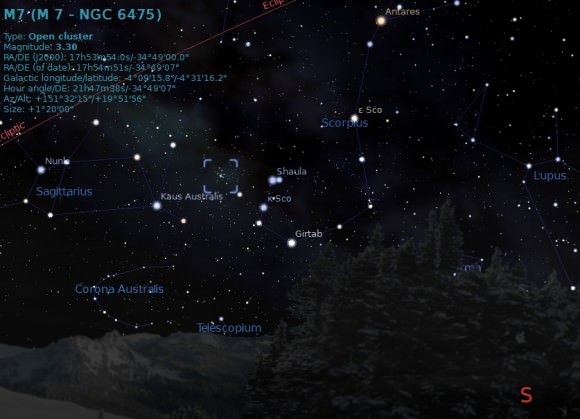
Messier 7 is also sometimes called Ptolemy’s Cluster after astronomer Claudius Ptolemy, who first described it in 130 A.D. as the “nebula following the sting of Scorpius.” The season for hunting all of Messier’s objects in an all night marathon is coming right up in March, and Messier 7 is one of the last targets on the list, hanging high due south in the early morning sky.
Interested in catching how Messier 7 will evolve, or might look like up close? Check out Messier 45 (the Pleiades) and the V-shaped Hyades high in the skies in the constellation Taurus at dusk to see what’s in store as Messier 7 disperses, as well as the Ursa Major Moving Group.
And be sure to enjoy the fine view today of Messier 7 from the ESO!
Got pics of Messier 7 or any other deep sky objects? Send ’em, in to Universe Today!


